SI3402 Switching Regulator: SI3402 Datasheet, Pinout, Schematic
IC POE PD LOW EMI SW REG 20VQFN
The Si3402 integrates all power management and control functions required in a Power-over-Ethernet (PoE) powered device (PD) application. This article will unlock its datasheet, pinout, feature and more about Si3402. Welcome your RFQ!
SI3402 Pinout
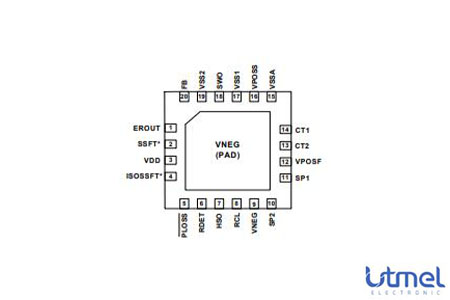
SI3402 Pinout
SI3402 CAD Model
Symbol
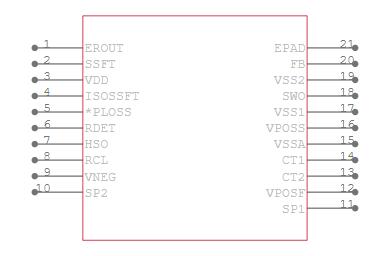
SI3402 Symbol
Footprint
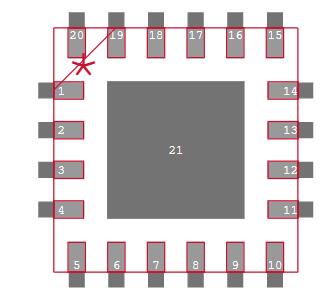
SI3402 Footprint
3D Model
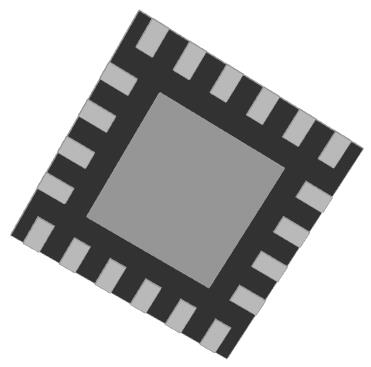
SI3402 3D Model
SI3402 Description
The Si3402 integrates all power management and control functions required in a Power-over-Ethernet (PoE) powered device (PD) application. The Si3402 converts the high voltage supplied over the 10/100/1000BASE-T Ethernet connection into a regulated, low-voltage output supply. The optimized architecture of the Si3402 minimizes the solution footprint, reduces external BOM cost, and enables the use of low-cost external components while maintaining high performance. The Si3402 integrates the required diode bridges and transient surge suppressor, thus enabling the direct connection of the IC to the Ethernet RJ-45 connector. The switching power FET and all associated functions are also integrated. The integrated switching regulator supports isolated (flyback) and nonisolated (buck) converter topologies. The Si3402 is available in a low-profile, 20-pin, 5 x 5 mm QFN package.
SI3402 Feature
Pin-compatible replacement for the obsolete Si3402 -A
IEEE 802.3 standard-compliant solution, including pre-standard (legacy) PoE support
Highly-integrated IC enables compact solution footprints
l Minimal external components
l Integrated diode bridges and transient surge suppressor
l Integrated switching regulator controller with on-chip power FET
l Integrated dual current-limited hot-swap switch
Programmable classification circuit
Incorporates switcher EMI reduction techniques
Supports non-isolated and isolated switching topologies
Comprehensive protection circuitry
l Transient overvoltage protection
l Undervoltage lockout
l Early power-loss indicator
l Thermal shutdown protection
l Foldback current limiting
SI3402 Application
Voice over IP telephones and adapters
Wireless access points
Security cameras
Point-of-sale terminals
Internet appliances
Network devices
High power applications
SI3402 Schematic
The SI3402 Schematic is given below:

SI3402 Application Circuit-Isolated Flyback Topology

SI3402 Application Circuit-Non-Isolated Buck Topology
SI3402 Functional Block Diagram
The Si3402 consists of two major functions: a hot-swap controller/interface and a complete pulse-width-modulated switching regulator (controller and power FET). The following figure shows the functional diagram of Si3402.
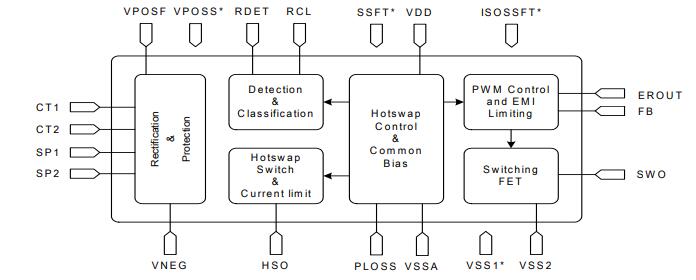
SI3402 Functional Block Diagram
Specifications
- TypeParameter
- Factory Lead Time8 Weeks
- Package / Case
refers to the protective housing that encases an electronic component, providing mechanical support, electrical connections, and thermal management.
20-VQFN Exposed Pad - Surface Mount
having leads that are designed to be soldered on the side of a circuit board that the body of the component is mounted on.
YES - Operating Temperature
The operating temperature is the range of ambient temperature within which a power supply, or any other electrical equipment, operate in. This ranges from a minimum operating temperature, to a peak or maximum operating temperature, outside which, the power supply may fail.
-40°C~85°C - Packaging
Semiconductor package is a carrier / shell used to contain and cover one or more semiconductor components or integrated circuits. The material of the shell can be metal, plastic, glass or ceramic.
Tray - Published1999
- Part Status
Parts can have many statuses as they progress through the configuration, analysis, review, and approval stages.
Active - Moisture Sensitivity Level (MSL)
Moisture Sensitivity Level (MSL) is a standardized rating that indicates the susceptibility of electronic components, particularly semiconductors, to moisture-induced damage during storage and the soldering process, defining the allowable exposure time to ambient conditions before they require special handling or baking to prevent failures
3 (168 Hours) - Number of Terminations20
- ECCN Code
An ECCN (Export Control Classification Number) is an alphanumeric code used by the U.S. Bureau of Industry and Security to identify and categorize electronic components and other dual-use items that may require an export license based on their technical characteristics and potential for military use.
EAR99 - TypeController (PD), DC/DC
- Max Power Dissipation
The maximum power that the MOSFET can dissipate continuously under the specified thermal conditions.
17W - Voltage - Supply
Voltage - Supply refers to the range of voltage levels that an electronic component or circuit is designed to operate with. It indicates the minimum and maximum supply voltage that can be applied for the device to function properly. Providing supply voltages outside this range can lead to malfunction, damage, or reduced performance. This parameter is critical for ensuring compatibility between different components in a circuit.
2.8V~57V - Terminal Position
In electronic components, the term "Terminal Position" refers to the physical location of the connection points on the component where external electrical connections can be made. These connection points, known as terminals, are typically used to attach wires, leads, or other components to the main body of the electronic component. The terminal position is important for ensuring proper connectivity and functionality of the component within a circuit. It is often specified in technical datasheets or component specifications to help designers and engineers understand how to properly integrate the component into their circuit designs.
QUAD - Peak Reflow Temperature (Cel)
Peak Reflow Temperature (Cel) is a parameter that specifies the maximum temperature at which an electronic component can be exposed during the reflow soldering process. Reflow soldering is a common method used to attach electronic components to a circuit board. The Peak Reflow Temperature is crucial because it ensures that the component is not damaged or degraded during the soldering process. Exceeding the specified Peak Reflow Temperature can lead to issues such as component failure, reduced performance, or even permanent damage to the component. It is important for manufacturers and assemblers to adhere to the recommended Peak Reflow Temperature to ensure the reliability and functionality of the electronic components.
260 - Number of Functions1
- Terminal Pitch
The center distance from one pole to the next.
0.8mm - Frequency
In electronic components, the parameter "Frequency" refers to the rate at which a signal oscillates or cycles within a given period of time. It is typically measured in Hertz (Hz) and represents how many times a signal completes a full cycle in one second. Frequency is a crucial aspect in electronic components as it determines the behavior and performance of various devices such as oscillators, filters, and communication systems. Understanding the frequency characteristics of components is essential for designing and analyzing electronic circuits to ensure proper functionality and compatibility with other components in a system.
350kHz - Time@Peak Reflow Temperature-Max (s)
Time@Peak Reflow Temperature-Max (s) refers to the maximum duration that an electronic component can be exposed to the peak reflow temperature during the soldering process, which is crucial for ensuring reliable solder joint formation without damaging the component.
30 - JESD-30 Code
JESD-30 Code refers to a standardized descriptive designation system established by JEDEC for semiconductor-device packages. This system provides a systematic method for generating designators that convey essential information about the package's physical characteristics, such as size and shape, which aids in component identification and selection. By using JESD-30 codes, manufacturers and engineers can ensure consistency and clarity in the specification of semiconductor packages across various applications and industries.
S-XQCC-N20 - Input Voltage-Nom
Input Voltage-Nom refers to the nominal or rated input voltage that an electronic component or device is designed to operate within. This parameter specifies the voltage level at which the component is expected to function optimally and safely. It is important to ensure that the actual input voltage supplied to the component does not exceed this nominal value to prevent damage or malfunction. Manufacturers provide this specification to guide users in selecting the appropriate power supply or input voltage source for the component. It is a critical parameter to consider when designing or using electronic circuits to ensure reliable performance and longevity of the component.
5V - Number of Channels1
- Operating Supply Current
Operating Supply Current, also known as supply current or quiescent current, is a crucial parameter in electronic components that indicates the amount of current required for the device to operate under normal conditions. It represents the current drawn by the component from the power supply while it is functioning. This parameter is important for determining the power consumption of the component and is typically specified in datasheets to help designers calculate the overall power requirements of their circuits. Understanding the operating supply current is essential for ensuring proper functionality and efficiency of electronic systems.
2mA - Output Current-Max
Output Current-Max is a parameter in electronic components that specifies the maximum amount of current that can be safely drawn from the output of the component without causing damage. It is an important specification to consider when designing circuits to ensure that the component can handle the required current without overheating or failing. Exceeding the maximum output current can lead to performance issues, component damage, or even complete failure of the circuit. It is crucial to adhere to the specified maximum output current to ensure the reliable operation of the electronic component and the overall circuit.
0.68A - Control Technique
In electronic components, "Control Technique" refers to the method or approach used to regulate and manage the operation of the component. This parameter is crucial in determining how the component functions within a circuit or system. Different control techniques can include analog control, digital control, pulse-width modulation (PWM), and various feedback mechanisms. The choice of control technique can impact the performance, efficiency, and overall functionality of the electronic component. It is important to select the appropriate control technique based on the specific requirements and characteristics of the application in which the component will be used.
PULSE WIDTH MODULATION - Nominal Input Voltage
The actual voltage at which a circuit operates can vary from the nominal voltage within a range that permits satisfactory operation of equipment. The word “nominal” means “named”.
57V - Switcher Configuration
Switcher Configuration in electronic components refers to the arrangement or setup of a switcher circuit, which is a type of power supply that converts one form of electrical energy into another. The configuration of a switcher circuit includes the specific components used, such as transistors, diodes, capacitors, and inductors, as well as their interconnections and control mechanisms. The switcher configuration determines the efficiency, voltage regulation, and other performance characteristics of the power supply. Different switcher configurations, such as buck, boost, buck-boost, and flyback, are used for various applications depending on the desired output voltage and current requirements. Understanding and selecting the appropriate switcher configuration is crucial in designing reliable and efficient power supply systems for electronic devices.
BUCK - Internal Switch(s)
The term "Internal Switch(s)" in electronic components typically refers to a built-in mechanism within a device that allows for the control of electrical current flow. These internal switches can be used to turn circuits on or off, change the direction of current, or regulate the flow of electricity within the component. They are often designed to be controlled externally, either manually or automatically, to enable various functions or operations within the electronic device. Internal switches play a crucial role in the overall functionality and performance of electronic components by providing a means to manage and manipulate electrical signals effectively.
Yes - Standards
The parameter "Standards" in electronic components refers to established criteria or specifications that ensure interoperability, safety, and performance across various electronic devices and systems. These standards are often set by recognized organizations and describe the characteristics, dimensions, and testing methods for components. Adherence to these standards helps manufacturers produce compatible and reliable products, facilitates communication between devices, and ensures compliance with regulatory requirements. Standards play a crucial role in the consistency and quality of electronic components in the industry.
802.3at (PoE+), 802.3af (PoE) - Auxiliary Sense
Auxiliary Sense refers to an additional sensing capability in electronic components that allows for the measurement of parameters such as voltage or current for the purposes of improving accuracy and performance. This feature is often used in power electronics to monitor and compensate for variations in load or temperature. By utilizing auxiliary sense inputs, designs can achieve better regulation and operational stability in various applications.
No - Length5mm
- Height Seated (Max)
Height Seated (Max) is a parameter in electronic components that refers to the maximum allowable height of the component when it is properly seated or installed on a circuit board or within an enclosure. This specification is crucial for ensuring proper fit and alignment within the overall system design. Exceeding the maximum seated height can lead to mechanical interference, electrical shorts, or other issues that may impact the performance and reliability of the electronic device. Manufacturers provide this information to help designers and engineers select components that will fit within the designated space and function correctly in the intended application.
0.9mm - Width5mm
- RoHS Status
RoHS means “Restriction of Certain Hazardous Substances” in the “Hazardous Substances Directive” in electrical and electronic equipment.
RoHS Compliant
SI3402 Package

SI3402 Package
SI3402 Manufacturer
Silicon Labs (NASDAQ: SLAB) is a leading provider of silicon, software and system solutions for the Internet of Things, Internet infrastructure, industrial control, consumer and automotive markets. Resolving the electronics industry's toughest problems, providing customers with significant advantages in performance, energy savings, connectivity, and design simplicity. Backed by world-class engineering teams with unsurpassed software and mixed-signal design expertise, Silicon Labs empowers developers with the tools and technologies they need to advance quickly and easily from initial idea to final product.
Datasheet PDF
- Datasheets :
- PCN Design/Specification :
Trend Analysis
What type of application does the Si3402 integrate power management and control functions?
Power-over-Ethernet (PoE) powered device (PD).
What supports isolated (flyback) and nonisolated (buck) converter topologies?
Integrated switching regulator.
What does the Si3402 integrate?
The required diode bridges and transient surge suppressor switching power FET.
What interface of the Si3402 provides the complete?
Hot-swap.
How many full diode bridges does the Si3402?
Two.
How does the si3402 work?
The Si3402 converts the high voltage supplied over the 10/100/1000BASE-T Ethernet connection into a regulated, low-voltage output supply. The optimized architecture of the Si3402 minimizes the solution footprint, reduces external BOM cost, and enables the use of low-cost external components while maintaining high performance.
What is the si3402 power-over-Ethernet (PoE) device?
The Si3402 integrates all power management and control functions required in a Power-over-Ethernet (PoE) powered device (PD) application. The Si3402 converts the high voltage supplied over the 10/100/1000BASE-T Ethernet connection into a regulated, low-voltage output supply.
Is the si3402 compatible with legacy PSEs?
The Si3402 is compatible with compliant and legacy PSEs because it uses two levels for the hot-swap current limits. By setting the initial inrush current limit to a low level, a PD based on the Si3402 minimizes the current drawn from either a compliant or legacy PSE during startup.
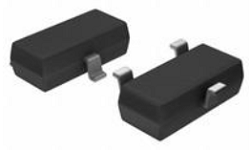 TL431AIDBZR IC: Features, Applications and Datasheet
TL431AIDBZR IC: Features, Applications and Datasheet31 October 2023362
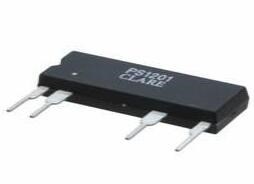 PS1201 AC Power Switch:Pinout, Application and Datasheet
PS1201 AC Power Switch:Pinout, Application and Datasheet04 August 20211154
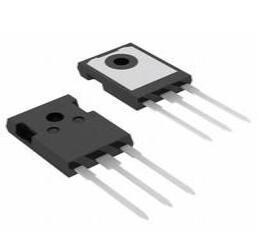 IRFP260 Power MOSFET: 46A 200V N-Channel TO247, IRFP260 Equivalents and Datasheet
IRFP260 Power MOSFET: 46A 200V N-Channel TO247, IRFP260 Equivalents and Datasheet29 December 20213576
 Discovering the NXP LPC3141/3143 Microcontroller: A Technical Analysis
Discovering the NXP LPC3141/3143 Microcontroller: A Technical Analysis29 February 2024129
 SMBJ16CA TVS Diode: Datasheet, Application, Functional Diagram
SMBJ16CA TVS Diode: Datasheet, Application, Functional Diagram02 November 20211609
 LM111 Differential Comparators: Alternative, Pinout and Datasheet
LM111 Differential Comparators: Alternative, Pinout and Datasheet16 July 20211378
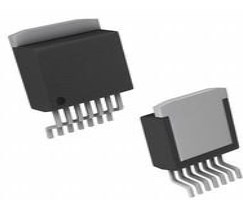 BTS7960 PN Half Bridge: Pinout, Datasheet and Schematic
BTS7960 PN Half Bridge: Pinout, Datasheet and Schematic13 July 202112332
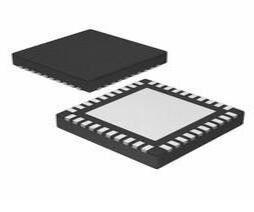 CC2541 MCU: Pinout, Circuit, Application
CC2541 MCU: Pinout, Circuit, Application14 August 20213843
 What are the Types and Dielectric of Ceramic Capacitors?
What are the Types and Dielectric of Ceramic Capacitors?16 October 202510731
 Voltage Regulator: Types, Working, and Applications
Voltage Regulator: Types, Working, and Applications23 February 202122122
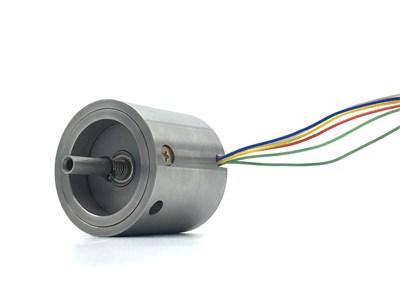 RVDT(Rotary Variable Differential Transformer) Basics
RVDT(Rotary Variable Differential Transformer) Basics02 February 202116865
 Devices based on Semiconductor Laser Chaos for Optical Communications
Devices based on Semiconductor Laser Chaos for Optical Communications22 February 2023915
 SAW Filter: Introduction, Features and Applications
SAW Filter: Introduction, Features and Applications30 December 20208122
 Towards an Optoelectronic Chip That Mimics the Human Brain
Towards an Optoelectronic Chip That Mimics the Human Brain20 April 2022772
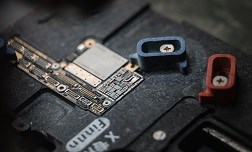 Basic Guidelines for Mixed-Signal PCB Layout Design
Basic Guidelines for Mixed-Signal PCB Layout Design15 March 20244288
 Detailed Introduction of the Chip Design Process
Detailed Introduction of the Chip Design Process21 December 202116536
Silicon Labs
In Stock: 2
United States
China
Canada
Japan
Russia
Germany
United Kingdom
Singapore
Italy
Hong Kong(China)
Taiwan(China)
France
Korea
Mexico
Netherlands
Malaysia
Austria
Spain
Switzerland
Poland
Thailand
Vietnam
India
United Arab Emirates
Afghanistan
Åland Islands
Albania
Algeria
American Samoa
Andorra
Angola
Anguilla
Antigua & Barbuda
Argentina
Armenia
Aruba
Australia
Azerbaijan
Bahamas
Bahrain
Bangladesh
Barbados
Belarus
Belgium
Belize
Benin
Bermuda
Bhutan
Bolivia
Bonaire, Sint Eustatius and Saba
Bosnia & Herzegovina
Botswana
Brazil
British Indian Ocean Territory
British Virgin Islands
Brunei
Bulgaria
Burkina Faso
Burundi
Cabo Verde
Cambodia
Cameroon
Cayman Islands
Central African Republic
Chad
Chile
Christmas Island
Cocos (Keeling) Islands
Colombia
Comoros
Congo
Congo (DRC)
Cook Islands
Costa Rica
Côte d’Ivoire
Croatia
Cuba
Curaçao
Cyprus
Czechia
Denmark
Djibouti
Dominica
Dominican Republic
Ecuador
Egypt
El Salvador
Equatorial Guinea
Eritrea
Estonia
Eswatini
Ethiopia
Falkland Islands
Faroe Islands
Fiji
Finland
French Guiana
French Polynesia
Gabon
Gambia
Georgia
Ghana
Gibraltar
Greece
Greenland
Grenada
Guadeloupe
Guam
Guatemala
Guernsey
Guinea
Guinea-Bissau
Guyana
Haiti
Honduras
Hungary
Iceland
Indonesia
Iran
Iraq
Ireland
Isle of Man
Israel
Jamaica
Jersey
Jordan
Kazakhstan
Kenya
Kiribati
Kosovo
Kuwait
Kyrgyzstan
Laos
Latvia
Lebanon
Lesotho
Liberia
Libya
Liechtenstein
Lithuania
Luxembourg
Macao(China)
Madagascar
Malawi
Maldives
Mali
Malta
Marshall Islands
Martinique
Mauritania
Mauritius
Mayotte
Micronesia
Moldova
Monaco
Mongolia
Montenegro
Montserrat
Morocco
Mozambique
Myanmar
Namibia
Nauru
Nepal
New Caledonia
New Zealand
Nicaragua
Niger
Nigeria
Niue
Norfolk Island
North Korea
North Macedonia
Northern Mariana Islands
Norway
Oman
Pakistan
Palau
Palestinian Authority
Panama
Papua New Guinea
Paraguay
Peru
Philippines
Pitcairn Islands
Portugal
Puerto Rico
Qatar
Réunion
Romania
Rwanda
Samoa
San Marino
São Tomé & Príncipe
Saudi Arabia
Senegal
Serbia
Seychelles
Sierra Leone
Sint Maarten
Slovakia
Slovenia
Solomon Islands
Somalia
South Africa
South Sudan
Sri Lanka
St Helena, Ascension, Tristan da Cunha
St. Barthélemy
St. Kitts & Nevis
St. Lucia
St. Martin
St. Pierre & Miquelon
St. Vincent & Grenadines
Sudan
Suriname
Svalbard & Jan Mayen
Sweden
Syria
Tajikistan
Tanzania
Timor-Leste
Togo
Tokelau
Tonga
Trinidad & Tobago
Tunisia
Turkey
Turkmenistan
Turks & Caicos Islands
Tuvalu
U.S. Outlying Islands
U.S. Virgin Islands
Uganda
Ukraine
Uruguay
Uzbekistan
Vanuatu
Vatican City
Venezuela
Wallis & Futuna
Yemen
Zambia
Zimbabwe










